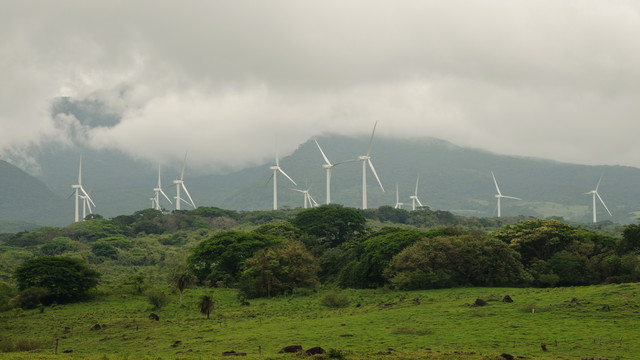Learning the lessons from Chile's energy transformation
The SDGs promise transformational change – but how is this delivered? A new study from RIMISP, a partner of the Independent Research Forum (IRF), looks at how major change came about in Chile's energy sector.


Public protests against new dams in Patagonia. RIMISP's study shows the need for public consultation on major infrastructure projects (Photo: Glenn Switkes/International Rivers, Creative Commons via Flickr)
The Sustainable Development Goals (SDGs) offer huge promise of a better world – with 17 goals setting out targets for improving everything from ending poverty to gender equality and access to energy for all.
Achieving change on this scale is a huge challenge for national governments and indeed for the whole of society, but it is not an impossible feat. Transformational changes have been made before, not least in Chile – where household access to electricity increased from 52 per cent in 1970 to 98 per cent in 2010. So what can we learn from the way that change was realised?
To answer that question, the Latin American Center for Rural Development (RIMISP) and the Foundation for Democracy and Development (FDD) brought together several political and business leaders involved in transforming Chile's energy sector for a series of discussions about what was involved. The outcome of these discussions, due to be published soon, have important lessons for national governments looking to implement the SDGs.
It was an enormous privilege to be part of these discussions, which included eminent politicians such as Ricardo Lagos, the former President of Chile who chaired the policy dialogue group.
The discussions took place every three to five weeks, over a period of seven months; minutes were produced after each meeting. Despite the diversity of the participants (from leading environmentalists to academics to senior managers of multinational energy corporations to political leaders), the debate (moderated by Alvaro García, a former minister for economic development and, later, of energy) was always very constructive, perhaps because it was organised according to the proposed sustainable development goals and targets rather than the policy dilemmas and conflicts in the Chilean policy agenda.
The Chilean context
For the period covered by the study (1980-2013), Chile experienced rapid economic growth, a sharp fall in poverty, and a significant increase in energy demand. At the same time, there was significant investment in the energy sector, which had been privatised in the 1980s.
Electricity coverage in Chile had been increasing steadily since the 1970s, but to ensure access in remote regions, the government, in partnership with the private sector, established a Rural Electrification Program. This provided subsidies for investment in power distribution in isolated areas.
But while access to electricity was extended, rising energy prices made electricity too expensive. As a result, some opted to continue using wood as their main source of fuel for heating and cooking, increasing the environmental costs.
The rapid extension of energy infrastructure involved the construction of new dams and power plants. Eventually, this led to widespread opposition to many of the new projects from social movements and local communities; the decision-making process to design, approve and carry out new projects lacked social legitimacy, as people felt that spaces for effective participation were inadequate and that the distribution of costs and benefits was unfair.
Key lessons for implementation
Reviewing these outcomes, the group recognised that government support, and government regulation played a crucial role in supporting the private sector to extend the electricity network across the country.
But it was clear that access to clean energy not only depends on access to infrastructure, but also on affordability – and that the government's subsidies had failed to compensate for rising prices.
Business leaders within the group also pointed out how public protest had delayed the energy programme, increasing costs. They suggested the need for greater public consultation to ensure public support – with more democratic discussion and debate about the pros and cons of the policies being implemented.
Hindsight also showed the value of a long-term national strategy for energy, placing long -term objectives above short-term goals, and balancing carefully national, regional and local priorities, as well as the economic, social and environmental dimensions of energy policies and investments.
Lessons for the SDGs
Chile's experience reveals some valuable lessons for the SDGs, particularly regarding the targets and indicators that are likely to shape national polices. The current draft targets for energy are based on renewable energy use as a share of the total consumption. That puts countries that have already switched to renewable sources at a disadvantage – and ignores the more crucial greenhouse gas emissions.
The current proposals for energy also suggest energy efficiency improvements in different sectors as an indicator, but this effectively discriminates against developing countries as they are likely to become less efficient in relation to GDP as they develop. This suggests there is a need to consider national contexts when determining indicators.
The Chilean case also illustrates the importance of effective public, public-private and civil society partnerships – as recognised in the proposals put forward by the United Nations' Open Working Group (OWG). The failure to adequately include civil society in Chile's energy programme led to public disaffection and protest, which delayed the programme and increased costs.
Public buy-in and support will be an essential factor in delivering all of the SDGs – not just access to energy.
Dr Julio Berdegué is principal researcher at the Latin American Center for Rural Development (RIMISP). This blog first appeared on the the Independent Research Forum (IRF) website.



